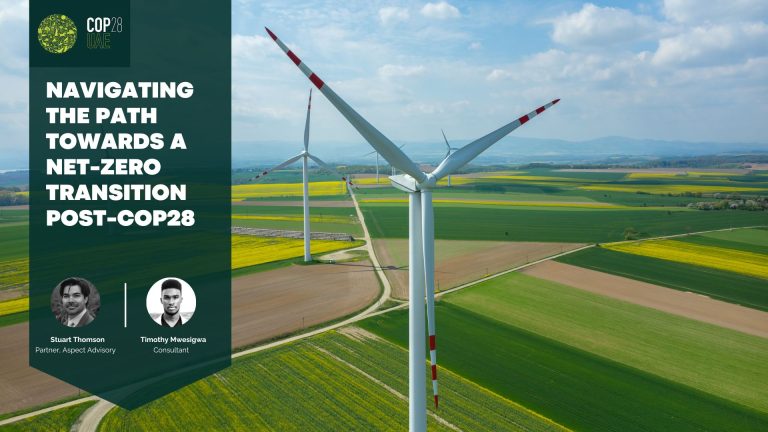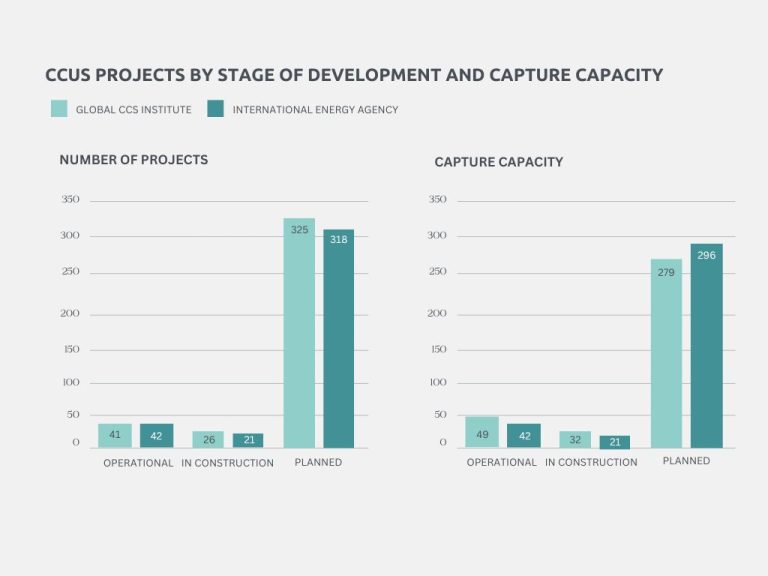
Introduction
2023 has now been officially confirmed as the hottest year on record, sounding alarm bells about the tangible impacts of climate change and the efficacy of global efforts to mitigate its effects. In this article, we consider what responses the world, and the financial sector in particular areare adopting or planning to adopt in light ofconsidering this grim milestone we have now passed. The focus of course is the United Nations Convention and the Conference of Parties (or COP), the supreme decision-making body of the convention. Last month, Dubai played host to COP28, a pivotal moment in climate diplomacy since the 2015 Paris Agreement, which saw world leaders achieve notable milestone such as establishing a fund for countries most vulnerable to climate change; and agreeing to transition away from fossil fuels. COP28 underscored the complexity of reducing carbon emissions across key sectors while balancing affordability and socio-economic considerations. Below, we delve into the pursuit of these intertwined objectives of a stable, net-zero future.
Key points:
A cornerstone of COP28 was the inaugural Global Stocktake, a five-yearly review process conceived in Paris to amplify climate action. The UAE Consensus, emanating from discussions in Dubai, tackled a breadth of climate issues and set ambitious targets, particularly for the energy and transport sectors. It also underscored the importance of sustainable food systems and forest conservation, laying the groundwork for national climate commitments due in 2025.
The outcomes of the conference, however, received a mixed reception. The Alliance of Small Island States (AOSIS) acknowledged the merits of the COP28 agreement but expressed concerns, particularly
regarding the endorsement of carbon capture technology. For many vulnerable nations, this technology is seen as a stopgap rather than a solution to the fundamental issue: the cessation of fossil fuel use. Its checkered performance record, high costs, and the undue burden it places on vulnerable populations underpin these reservations.
Furthermore, the conference grappled with
additional challenges. Although a framework for the Global Goal on adaptation was established, a definitive strategy for bridging the adaptation finance gap remains elusive. Likewise, the financial intricacies of the pledge to transition to clean energy are yet to be clarified. The forthcoming COP, scheduled for November 2024 in Azerbaijan, is tasked with providing explicit financial guidance.
Decarbonization: A Keystone in Net Zero Transition
The drive towards renewable energy, highlighted during COP28, is recognised not only as a pivotal environmental stride but also as a potential economic windfall. By 2030, transitioning to renewable sources like wind and solar could yield economic benefits totalling $26 trillion. The UAE Consensus advocates for a swift and equitable transition to renewables within this decade, aiming for a carbon-neutral world by mid-century. Ambitious targets were set, including tripling renewable energy use and doubling energy efficiency by 2030. Transportation emissions are also targeted, with initiatives to promote electric vehicles, public transportation, and bike-friendly infrastructure.

The conference also trained its focus on carbon capture technologies—a contentious topic, particularly given the host country’s plans to implement this in its oil and gas sector. While 41 carbon capture projects are operational worldwide, capturing 42 to 49 million metric tons of CO2 annually—mere 0.1% of global greenhouse gas emissions—over 300 projects are at various stages of planning as shown in Figure 1.
Figure 1: Carbon Capture Projects: Operational and under costruction (Source: CCS Institute (GCCSI) and IEA)
Despite the technology’s potential, it is met with scepticism. Critics argue that it could incentivize the continued use of fossil fuels, contradicting the Intergovernmental Panel on Climate Change’s scenarios, which do not endorse the perpetuation of current fossil fuel usage levels. Moreover, the high costs—often exceeding $1 billion—and the associated risks, including pipeline leaks, toxic pollution, and safety hazards, are particularly detrimental to developing nations.
The path to net-zero emissions is complex, demanding multifaceted changes in technology, policy, and societal norms. The transition must be carefully orchestrated, considering affordability, social equity, and industry competitiveness. These considerations are vital to ensure the effectiveness and sustainability of global emission reduction efforts.
Cost Effectiveness in the Net Zero Transition: Balancing Cost and Opportunity
In line with the objective of affordability, the Dubai summit marked a pivotal moment with the activation of the Loss and Damage Fund. This fund will serve as a means to assist nations grappling with climate consequences beyond their adaptive capacity, and was fully operationalised on the first day of COP28.
The initial contributions totalling around $700 million serve as a promising start, but when viewed against the projected $580 billion in climate damages that vulnerable countries may face by 2030, it’s clear that this is just the first step on a much longer journey. The soon-to-be-formed board governing the fund carries the weighty responsibility to ensure the policies are aptly designed, responsive to the urgent needs of these nations, and capable of mobilizing substantial resources.
The World Bank’s forthcoming decision on whether to administer the fund, subject to the stipulated conditions, is another critical piece of the puzzle. With the clock ticking towards COP29, it is imperative that the institutional frameworks are solidified to enable the flow of finances to impactful projects.
Simultaneously, the affordability of low-emission technologies is enhancing their competitive edge over traditional energy sources, particularly when considering the total costs of ownership. As production scales, these technologies not only promise to secure energy independence by leveraging domestic sources like solar and wind but also to catalyse competition in burgeoning industries associated with sustainable technology and services.
The quest for net zero necessitates a formidable economic shift, with estimates pointing to the need for approximately $9.2 trillion in annual spending on physical assets. While this figure may seem overwhelming, it’s an investment imperative to avert the direst consequences of climate change and to spur economic growth within the low-emission sector.
For developing nations, the road to net zero is fraught with financial challenges. Limited resources call for a robust influx of foreign investment and grants. These nations face the dual burden of reducing high emissions and modernizing infrastructure. Wealthier countries, in contrast, have the means but must navigate fiscal policies, public opinion, and economic impacts with care.
The cost of capital is another linchpin in this transition, particularly for renewable energy projects where investment conditions vary widely across different regions. These discrepancies significantly affect the viability and affordability of a renewable energy shift, especially in emerging economies.
Overall, the infrastructure overhaul required for power, transport, buildings, and industry is monumental, with the OECD estimating a need for an annual investment of $6.9 trillion up until 2030. Despite the magnitude of this undertaking, the long-term benefits—climate mitigation and sustainable economic expansion—cannot be overstated.
Ensuring Stability and Resilience in the Net-Zero Transition
The conclusion of COP28 marked a significant shift in climate discourse, with food security taking centre stage in a global commitment to sustainable practices. The COP28 UAE Declaration on Sustainable Agriculture, Resilient Food Systems, and Climate Action, endorsed by 159 nations, is a historic move to integrate food systems into national climate agendas. This pledge, encompassing key global players, sets a precedent for future climate action.
The newly formed Alliance of Champions for Food Systems Transformation promises a holistic approach to hasten progress toward the Declaration’s goals. In lockstep, the FAO’s roadmap presents a dual focus on mitigating climate change and eradicating hunger, emphasizing the need for integrated solutions that align agricultural resilience with food distribution.
Countries are now tasked with translating these commitments into tangible actions within their NDCs, setting the stage for a significant review at COP29 and COP30. The efficacy of these commitments will hinge on the implementation of robust national policies and the sustained efforts of all stakeholders, including the private sector and civil society.
The continuity of political resolve from the Glasgow Declaration was evident, with the Joint Statement on Climate, Nature, and People solidifying commitments to enhance financing, community participation, and data acquisition. The FCLP’s targeted country packages illustrate a strategic approach to forest conservation and underscore the importance of tailored support for national action plans.
The summit’s financial dialogues heralded novel mechanisms for environmental protection and restoration, with significant pledges and proposals underscoring a proactive stance on nature conservation. The integration of energy storage solutions emerged as a central strategy for a reliable renewable energy transition, with studies affirming that robust storage capabilities are integral to cost-effective net-zero pathways.
The net-zero transition’s impact on global employment is twofold: it heralds a boom in clean energy jobs while necessitating the re-skilling of workers from traditional energy sectors. Addressing this shift requires deliberate policy interventions, retraining initiatives, and thoughtful localization of new industries.
Diversifying energy sources enhances security and resilience, as evidenced by the achievements of Denmark and Germany. This strategic mix not only mitigates supply risks but also promotes economic stability.
Lastly, the careful management of essential resources for energy systems—minerals, water, land, and labour—will be critical to sustaining growth and avoiding supply chain disruptions. Anticipating and planning for potential scarcities is vital for a consistent transition.
Conclusion: Integrating Towards a Sustainable Future
The conference crystallized a unanimous commitment to transition away from fossil fuels and embrace renewable energy sources. It also brought focus to the role of urban development and food systems in the climate equation. As we move forward, the articulated goals of COP28 must now be translated into concrete national actions, with the financial scaffolding necessary to support this transformative journey.
The UAE Consensus has set a benchmark for the next cycle of National Determined Contributions (NDCs). Countries must now embody this consensus in robust domestic legislation and policies, fostering a surge in renewable energy adoption, promoting fossil-free transportation, and curtailing fossil fuel reliance. These global accords have laid the groundwork, signalling a direction towards a more sustainable world, but the true test lies in their execution.
The path forward requires an intricate balance: a reduction in emissions, an increase in affordability, and a stabilisation of global energy and food systems. This balance will harmonise global environmental objectives with economic viability and social well-being, enabling the green transition to become a tangible reality.
Sources:
- Global Warming of 1.5 C, Intergovernmental Panel on Climate Change (IPCC), 2018
- Climate Change 2022: Mitigation of Climate Change, IPCC, 2022
- The future of heat pumps, International Energy Agency, December 2022.
- From poverty to empowerment: Raising the bar for sustainable and inclusive growth, McKinsey Global Institute, September 2023.
- Making net-zero steel possible, Mission Possible Partnership, September 2022
- Making net-zero aluminium possible, Mission Possible Partnership, April 2023
- Mission Possible sectoral focus: Cement, Energy Transitions Commission, January 2019.
- Why is net zero so important in the fight against climate change? London School of Economics, 2023
- What is net zero and why is it important?, United Nations, 2020
- What is Net Zero and why does it matter?, Carbon Trust, 2022
- The net-zero transitions: What it would cost, what it could bring, McKinsey, 2022
- Achieving net zero infrastructure, Oxford Economics and PWC
- Decarbonize and create value: How incumbents can tackle the steep challenge, McKinsey, 2023
Contact us

Stuart Thomson
Partner,
Aspect Advisory
![]()
